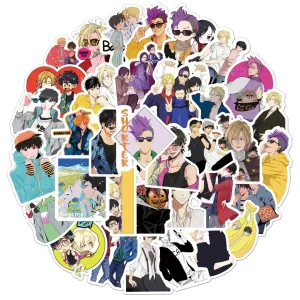Welcome to Culture of Gaming, where we’re all about video games, tech, and anime. One of the most popular and iconic gaming consoles of all time is the Nintendo Entertainment System, also known as NES. Released in 1983, the NES console played a crucial role in the gaming industry and helped shape the future of video games.
The NES is notable as being the console that revived the American video game industry after the crash in 1983. It brought gaming to a new level of success and helped the industry evolve into what it is today. The console’s controllers and games are still recognizable to many people today.
In this article, we’re going to take a look at the NES console in detail. We’ll discuss its design, history, reception, sales, games, and provide an overview of why it continues to be a defining moment in the gaming industry. Join us as we dive into the past and take a look at one of the most iconic consoles in gaming history.
NES Overview
The Nintendo Entertainment System (NES), also known as the Family Computer (Famicom) in Japan, was released in 1983. It was a home video game console designed and manufactured by Nintendo. The success of the console earned it a reputation beyond that of its competitors, ensuring its place in the history of video gaming.
The NES console was a top-loader and had a rectangular shape with a concise, modern-looking exterior. The console’s front was designed to appeal to a broad audience, with a smooth and sleek design aesthetic that left a lasting impact on gaming consoles produced by other companies. Below are the physical descriptions and specs of the NES console:
- The NES console measured 10 inches by 7 inches by 2.5 inches
- The console used a cartridge-based system for games
- The video output resolution was 240p and used composite video cables to achieve crisp graphics
- The NES came with two game controllers, each with a directional pad and buttons for the action and start
The peripherals of the NES console included:
- Light gun – a peripheral that provided added functionality for certain NES games; it allowed players to aim and shoot targets on the screen
- Robotic operating buddy (R.O.B.) – a peripheral robot that came with the console and offered limited gameplay interactions with select games
- Power Glove – a specially designed NES game controller that players could wear on their hand and operate by moving their arm and fingers to control their on-screen character in games
The NES console used a simple design; it had two controllers plugged in and connected to the back of the console, and the game cartridge inserted on top of the console. When the console was turned on, it displayed a white screen, which indicates that it was powered on. The presentation and design of the console made the NES a desirable gaming machine for many gamers, retailers, and other game console manufacturers.
Nintendo Entertainment System (NES) (1983) History and Development
The Nintendo Entertainment System (NES) was released in Japan in 1983. The console was initially successful in Japan, but it only gained recognition in western markets in 1985 after the video game industry crash. NES was the result of Nintendo’s collaboration with the Japanese toy manufacturer, Bandai, and it competed with consoles such as Atari 2600 and Intellivision.
Nintendo designed the NES to reinvigorate the declining video game industry and upend Atari’s dominance in the market. The company created gaming console and cartridge design specifications that restricted third-party developers from releasing too many low-quality games, which damaged the industry.
The launch of the NES Console and its games subsequently generated remarkable sales and profits for Nintendo. The NES offered enhanced graphics, sound, and processing power than its competitors. It featured popular games such as Super Mario Bros, The Legend of Zelda, and Donkey Kong, which appealed to both children and adults alike. By the end of 1985, Nintendo had sold around 2.5 million NES consoles in the United States, giving Atari a run for its money.
Following the NES’s success in the market, Nintendo relinquished Bandai’s rights, and they began sole ownership of the NES. Through the NES’s successful marketing campaign and quality game catalog, the console reshaped the video gaming industry and led to the resurgence of console gaming to become what it is today.
Sales and Reception
The NES console was a commercial success, surpassing Atari in terms of sales. Between 1985 and 1995, the console sold more than 61 million units, making it a staple in households across the world. Four factors contributed to the success of the NES:
- Price Point: The NES console was affordably priced compared to its rivals, which contributed to its initial success and sales.
- Games: The NES had a robust library of games, where each game was unique and fun to play. This made owners of the console anxious to get their hands on the latest games in the market.
- Gameplay: The gameplay of NES games was incredibly engaging and immersive, which kept gamers engaged for hours.
- Marketing: Nintendo’s robust marketing strategy created a positive brand image for the NES console, connecting with audiences across regions and backgrounds.
Although Nintendo’s marketing efforts put the console on the map, the games themselves did the most talking. With classics such as Super Mario Bros, The Legend of Zelda, and Metroid, the NES console made a lasting impression on the entire gaming industry and established itself as a revolutionary console. The library of games for the NES console has become highly notable on its merit that many titles still receive ports for new systems even today, 37 years later.
In the next section, we will look at the most popular titles of the NES Console and the important role they played in its success.
Games & Review
The NES is associated with some of the classic games that shaped the gaming industry into what it is today. The following is a chronological recap of some popular games of the NES console that brought the system immense success.
- Super Mario Bros (1985): One of the earliest and most iconic games of the console. It is still loved today.
- The Legend of Zelda (1986): helped popularised the action-adventure genre and earned a legendary status that lasts to this day.
- Mega Man 2 (1988): One of the most critically acclaimed and iconic games of the console. Its difficulty and rockin’ soundtrack were something to experience.
- Metroid (1987): helped establish the Action-Adventure genre with this platformer and is still referenced in today’s games.
NES games continue their legacy on modern platforms like Nintendo Switch. NES games such as Mario, Zelda, and Metroid are still loved today and have had sequels continue to come out till this day.
The NES Console and its games laid the foundation for the industry we have today. These games are essential to the industry and will be remembered for future generations to come.
Sure, I’d be happy to write the conclusion of the article based on the outlined section. Here it is:
Conclusion
In conclusion, the Nintendo Entertainment System (NES) laid the foundation for what would become an expansive and multi-billion-dollar gaming industry. It was the first home console that offered a user-friendly, seamless gaming experience with innovative peripherals and unforgettable games. The NES introduced the concept of game libraries, where a console could play different games through cartridges, which was only made possible through the NES’s design and hardware capabilities.
Currently, the NES is a classic and nostalgic console, representing a simpler time in gaming. This console has had a significant cultural impact, going beyond gaming and inspiring films, music, and literature that have reached across global pop culture. Although the NES has been surpassed by newer and improved consoles, it will always be remembered among gamers, nostalgic adults, and game enthusiasts alike.
The NES laid the foundation for later consoles like the Super NES, PlayStation, Xbox, and many others, which all took lessons and design inspiration from the original NES. It gave rise to the foremost popular franchises such as Mario and Legend of Zelda, among others, which remain popular and thriving today. It also shaped the future of video gaming as we know it today.
Frequently Asked Questions (FAQs)
1. What is the importance of the NES console in the history of gaming?
The NES console is significant because it helped revive the video game industry after the video game crash of 1983. It introduced iconic games and characters that still hold a special place in modern gaming, and laid the foundation for future console development.
2. What accessories and peripherals were available for the NES?
Some popular accessories and peripherals that were available for the NES include the light gun for shooting games, the power glove for motion control, and the NES Advantage joystick for a more arcade-like experience. The NES also had a variety of specialized controllers for specific games, such as the NES Max for sports games.
3. What were some of the most popular NES games?
Some of the most popular NES games include Super Mario Bros., The Legend of Zelda, Metroid, and Mega Man. These games are considered classics and have had a significant impact on the gaming industry, inspiring countless sequels and spin-offs.
4. How did the NES console compete with other gaming systems of its time?
The NES had several competitors during its time, including the Atari 7800, Sega Master System, and Commodore 64. However, the NES was able to gain a significant market share due to its exclusive game titles and impressive hardware capabilities.
5. What is the legacy of the NES console in the modern gaming industry?
The NES console’s legacy lives on in modern gaming through re-releases of classic titles, emulation on modern hardware, and even spiritual successors to classic games. The NES helped create a foundation for the gaming industry as we know it today.













